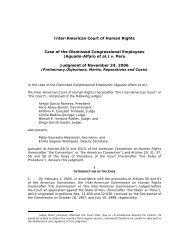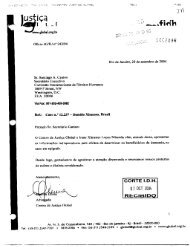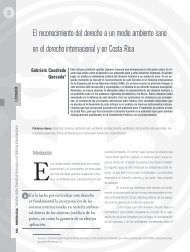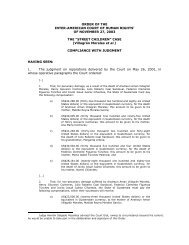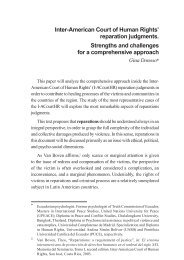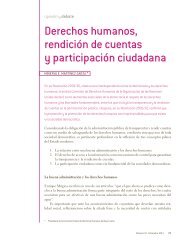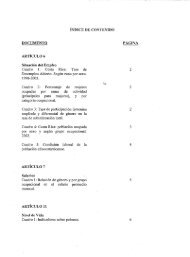The Political Economy of Japan Bradley M. RICHARDSON
The Political Economy of Japan Bradley M. RICHARDSON
The Political Economy of Japan Bradley M. RICHARDSON
- No tags were found...
You also want an ePaper? Increase the reach of your titles
YUMPU automatically turns print PDFs into web optimized ePapers that Google loves.
examples, not MITI policy. Under the kinds <strong>of</strong> circumstances just described some<strong>Japan</strong>ese economists have been loath to grant the plans a determinant role ineconomic behavior. In the words <strong>of</strong> Toshimasa Tsuruta (46):"...the modernization <strong>of</strong> the industrial structure, and the strengthening <strong>of</strong>industrial competitiveness were not the result <strong>of</strong> industrial policy, but rather <strong>of</strong>the relatively smooth operation <strong>of</strong> the price mechanism and the ability <strong>of</strong> firmsthrough their own decisions to adapt. <strong>The</strong> initial objectives <strong>of</strong> industrial policycould not be realized, and they remained empty plans…."Many commentators on <strong>Japan</strong>ese economic policy have speculated as to thegovernment's ability to pick winners and allocate resources accordingly. Among theindustries supported by the <strong>Japan</strong>ese government in the 1950s, iron and steel isnormally seen as a successful application <strong>of</strong> industrial policy (47). A variety <strong>of</strong> policytools -loans, tax incentives, protection and coordinated production and sales- wereused to stimulate modernization <strong>of</strong> facilities and stable supply and demand. Iron andsteel received $74.5 million in "rationalization" support from 1951-1965. While thiswas a fairly small amount <strong>of</strong> money compared with the funds given power, coal andshipping, it was still was considerably more than was given any other industry at thistime. <strong>The</strong> goal <strong>of</strong> policy was modernization <strong>of</strong> steelmaking processes so as toimprove productivity and lower prices. Lower prices in the steel industry were soughtto facilitate growth in domestic manufacturing industries which depended on steelinputs. Lower prices would also lead to more competitive exports. Productivity didincrease in the 1950s and steel prices declined until the first oil crisis in 1973 (48).One <strong>of</strong> the more interesting facets <strong>of</strong> <strong>Japan</strong>ese industrial policy is the simplefact that two <strong>of</strong> <strong>Japan</strong>'s most highly successful industries, consumer electronics andautomobiles, were given very little government support relative to infra-structure andlater recessed industries. Consumer electronics received only $6 million ingovernment loans during the 1960s, and the government initially opposed technologyimports destined for this industry in the 1950s (49). <strong>The</strong> government role in theautomobile industry was mixed. Government lending provided 8 percent <strong>of</strong> theindustry's borrowing needs in 1955, but only between less than 1 percent and 2percent in most other years (50). Tax incentives, government allocated technologyimports and protection have been seen as having a modest positive effect on theindustry in the 1950s and 1960s. Still, government policies (especially protectionistbarriers) are believed to have played a relatively modest role relative to othereconomic factors including high world demand, cheap gasoline in the United Statesand improvement <strong>of</strong> the <strong>Japan</strong>ese road system (51). Perhaps the most importantgovernment supports given <strong>Japan</strong>'s automobile industry were the loans and otherincentives provided auto parts producers, since these encouraged cost-saving andquality-invoking technological innovations in medium and small firms which providedinputs for the assembly lines <strong>of</strong> large firme (52).





